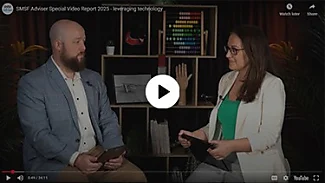SMSF rollovers: Hurdles to cross
This memo provides guidance on an SMSF rolling benefits to another SMSF both prior to and from 1 October 2021. The key change is the requirement to comply with the SuperStream rollover standards from 1 October 2021.
The regulations that apply from 1 October 2021 were finalised as law with an original commencement date for rollovers from 31 March 2021 (see div 6.5 of the Superannuation Industry (Supervision) Regulations 1994 (Cth) (SISR)). However, the commencement date was deferred by the Commissioner of Taxation to 1 October 2021 to provide more time for trustees to comply with the SuperStream changes.
There are strict time limits that apply, as rollovers generally must be finalised within three business days of a member request.
New rollover process
Rollovers from 1 October 2021 must generally use the data and payment system developed for digital transactions within the superannuation system referred to as “SuperStream”.
Unless an exception applies as discussed below, an SMSF is required to have an electronic service address (ESA) for rollovers from 1 October 2021.
An ESA is an electronic address that represents the uniform resource locator (URL) or internet protocol (IP) address of a messaging provider; an email address is not an ESA. You can get an ESA from certain SMSF software platforms or you should ask your accountant, SMSF administrator or financial adviser. The ATO also provides a list of ESA suppliers.
Many SMSFs currently use SuperStream for non-related employer contributions or may be administered with software platforms that will readily facilitate easy transition to SuperStream.
From 1 October 2021, most rollovers from an SMSF to other superannuation funds (e.g. retail and industry superannuation funds) and from other superannuation funds to an SMSF must be processed via SuperStream. However, in-specie and partial rollovers are not subject to the SuperStream system.
A Rollover Benefits Statement must be completed when you pay a rollover super benefit to another super provider.
This form is available from the ATO’s website and can be searched under ATO form NAT 70944 at www.ato.gov.au. From 1 October 2021, an SMSF trustee is deemed to provide a Rollover Benefits Statement to the receiving fund by completing the information electronically via the SuperStream system. From 1 October 2021, a Rollover Benefits Statement should also still be completed for rollovers in-kind (e.g. an allowable asset rollover) and for a partial rollover given these are not subject to the SuperStream system.
Significant penalties can be imposed for a contravention of the SuperStream standards. However, the ATO is expected to apply a time frame for the SMSF industry to transition to the SuperStream standards. Despite this uncertain ATO transitioning relief, a contravention is likely to result in an auditor contravention report and potential costs to respond to audit and ATO queries etc that arise.
Member rollover requests must be actioned quickly
An SMSF member can request a rollover of their superannuation benefits to another regulated superannuation fund or retirement savings account (RSA) provider in whole or in part. A trustee is required to action such a request as soon as practicable and generally within three business days (reg 6.34A of the SISR).
If the trustee requires information from the receiving fund to progress the rollover, the trustee must request that further information from the member within five business days of receiving the member’s request. If the trustee does not receive that further information within 10 business days, the trustee must make further reasonable inquiries of the member.
Prior to 1 October 2021, SMSF trustees have generally taken their time in processing rollover requests. Indeed, in a number of instances, SMSF trustees may have “slept” on member requests. It is interesting to note that there was no legislative requirement on an SMSF to roll over a member’s benefit until 1 December 2019 (see the Treasury Laws Amendment (2018 Measures No. 2) Regulations 2018 (Cth)).
From 1 October 2021, however, the new time frames require trustees to comply with the SISR criteria in processing rollover requests. What may be a big hurdle for many SMSFs, given that many SMSFs do not maintain their financial statements up to date on real-time basis (as compared to large industry and retail superannuation funds, which typically maintain ongoing daily accounting updates with daily unit pricing that allow ease of admission and exit of members).
SMSFs will need to prepare financial statements up to the date that the rollover payment is made reflecting any allocation of net earnings (or net losses) and movement in capital values adjusted for tax etc. This process can take several months to gather the relevant information and wait for the accountant and financial advisers to prepare the financial statements and then to obtain trustee feedback.
Accordingly, many SMSFs will need to plan ahead for a rollover to ensure the relevant work can be prepared on a timely basis.
However, partial rollovers are generally easier to manage where the amount rolled over is well within the member’s account balance and sufficient liquidity and cash flow in the fund exists.
Managing unplanned or surprise exits
The big hurdle for many SMSFs, however, will be managing rollovers in compliance with the new rules applying from 1 October 2021 for unplanned exits including, for example:
- Where there is a family dispute and where there is a “rift” between a parent and a child who is a member of the same fund. For example, where the parents have been contributing to their SMSF on behalf of their child and the child decides that they now want to roll over to their own SMSF or an industry or retail superannuation fund.
- Where there are siblings, business partners and/or their spouses etc in the same SMSF. Any “rift” or relationship issue could result in a member invoking their entitlement to have their benefit rolled out.
- Where there is a relationship breakdown between members especially one involving a dispute between separating spouses where one or more members may seek to invoke a rollover and “usurp” the usual super splitting rules in the Family Law Act 1975 (Cth) and the Superannuation Industry (Supervision) Act 1993 (Cth) and the SISR.
Thus, trustees should review whether the current fund membership is appropriate and whether any changes are required. Further, more careful consideration should be given to admitting new members. Consideration should also be given to admitting members on a conditional basis should the compatibility to share an SMSF or the “relationship” fall apart. For information on DBA Lawyers conditional membership document service, click here.
SMSF deeds should be reviewed to ensure they include appropriate provisions to manage the new SuperStream requirements. Many SMSF deeds may need to be updated.
Verification of SMSF and members’ details
Where a rollover is being made to an SMSF from 1 October 2021, a new process involves validating the receiving fund’s details including seeking confirmation that the person is a member of that fund. These requirements help protect the security of the rollover transaction and ensure the money is transferred correctly, especially given the risks of cyber crime and illegal early access schemes.
The trustee of the transferring fund must ask the ATO via the SuperStream system for a notice under s 299TD(2) of the Superannuation Industry (Supervision) Act 1993 (Cth) in relation to validating the member’s information.
The trustee of a transferring fund, where a rollover is being made to another SMSF, must also via the SuperStream system verify:
- the ABN and name of the receiving fund; and
- that the receiving fund is a regulated superannuation fund; and
- at least one unique superannuation identifier for the receiving fund and for each unique superannuation identifier:
- the unique bank details to facilitate electronic payment; and
- the fund’s unique digital address approved by the commissioner for the receipt of electronic communications; and
- that the member is a member of the receiving fund.
If the trustee is unable to verify all of the above details from the receiving fund within five business days, the trustee of the transferring fund must request the ATO to verify any missing details. If the ATO is unable to verify any missing details within 10 business days, the trustee must notify the member of the outcome of the commissioner’s enquiries.
An SMSF will require a unique bank account and ensure this is recorded with the ATO.
Disclosure to members
Since a rollover can be initiated by a member via a transferring fund (including an SMSF or industry/retail fund) or a receiving fund (including an SMSF or industry/retail fund), the trustee that receives a rollover request from a member has an obligation to ensure the member is aware that they can ask the trustee for information that the member reasonably requires for the purposes of understanding:
- any benefit entitlement that the member has in the transferring fund,
- any fees or charges that may apply to the proposed rollover, and
- the effect that the proposed rollover will have on any benefit entitlements (e.g. whether the member will have any further balance or insurance cover in the fund).
It is likely that more information than what is available in the SMSF’s product disclosure statement (PDS) is needed to satisfy the above criteria.
Other advantages of becoming SuperStream ready
As noted above, SuperStream is currently required for non-related employer contributions to be made to an SMSF. From 1 October 2021, SuperStream will also be required for release authorities for excess concessional and non-concessional contribution caps, Division 293 payments and First Home Super Saver (FHSS) scheme money for first-home purchases.
Will your SMSF be SuperStream ready by 1 October 2021?
From 1 October 2021, an SMSF will, among other things, require:
- A electronic service address (ESA) which is provided by a number of SMSF software platforms, advisers and administrators and some third-party suppliers. The ATO provides a list of ESA suppliers.
- A unique bank account recorded with the ATO.
- A Unique Superannuation Identifier (USI) which is the fund’s Australian business number (ABN) issued when the fund was established.
- The approved information ready to complete the SuperStream or Rollover Benefits Statement information requirements.
An SMSF member will also be able to initiate a rollover request via their myGov portal.
Expert advice
Expert advice should be obtained wherever there is any doubt, as substantial penalties can be imposed.
Conclusions
Many SMSFs may find complying with the new time frames difficult unless they plan ahead. A surprise or unplanned exit might place considerable time pressure on an SMSF to comply with the general three-business day time frame; this period may be impracticable and will be difficult, if not impossible, for many SMSFs to achieve. Thus, auditors may issue auditor contravention notices and SMSFs will need to deal with any follow-up activity including administrative penalties and the like from the ATO.
DBA Lawyers offer an SMSF to SMSF Rollover Kit to assist SMSFs to comply with the new rollover regime.
By Daniel Butler (

Tony Zhang
Tony Zhang is a journalist at Accountants Daily, which is the leading source of news, strategy and educational content for professionals working in the accounting sector.
Since joining the Momentum Media team in 2020, Tony has written for a range of its publications including Lawyers Weekly, Adviser Innovation, ifa and SMSF Adviser. He has been full-time on Accountants Daily since September 2021.













